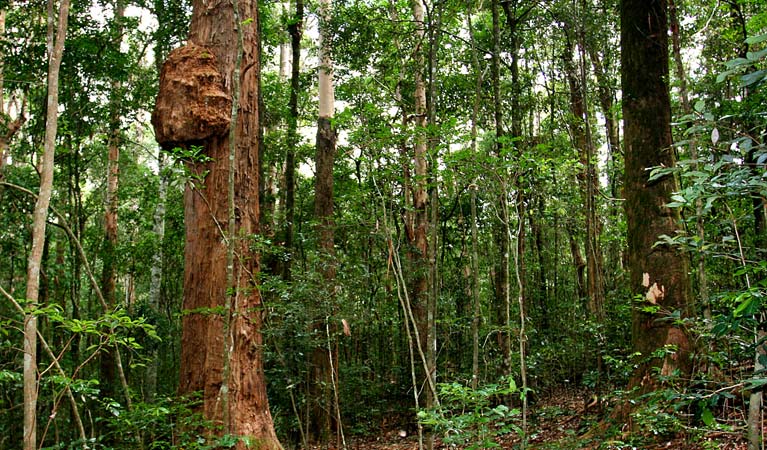Richmond Range National Park
Overview
Richmond Range National Park offers World Heritage rainforest walks, tranquil campgrounds, scenic views, and horse riding, near Kyogle, in northern NSW.
Read more about Richmond Range National Park
You'll find diverse landscapes and wildlife among the lush rainforest of Richmond Range National Park. Stretch your legs on a walk through the ancient rainforest, part of the Gondwana Rainforests of Australia world Heritage Area. Or take in panoramic views across the Richmond River valley from a lookout.
The well-maintained Cambridge Plateau 4WD route is a great way to explore. It snakes along the crest of Richmond Range, enjoying striking views between Mallanganee in the south and Mount Brown to the north.
The park provides a sanctuary for many animals and birds that live among the rich plant life. Keep an eye out for gobbling brush turkeys, non-venomous carpet pythons, and rose-crowned fruit-doves. At night, rare little bent-winged bats come out to feed on small insects that fly beneath the rainforest canopy.
A great day trip from Casino or Kyogle, explore the subtropical bush, relax at scenic picnic and campgrounds, or even horse ride using the park management trails.
Local alerts
For the latest updates on fires, closures and other alerts in this area, see https://www.nationalparks.nsw.gov.au/visit-a-park/parks/richmond-range-national-park/local-alerts
Contact
- in the North Coast region
Richmond Range National Park is always open but may have to close at times due to poor weather or fire danger.
-
-
Kyogle office
02 6632 0000
Contact hours: Monday to Friday, 8.30am to 4.30pm. - 136 Summerland Way, Kyogle NSW 2474
-
Email: npws.richmondriver@environment.nsw.gov.au
-
Kyogle office
Visitor info
All the practical information you need to know about Richmond Range National Park.
Map
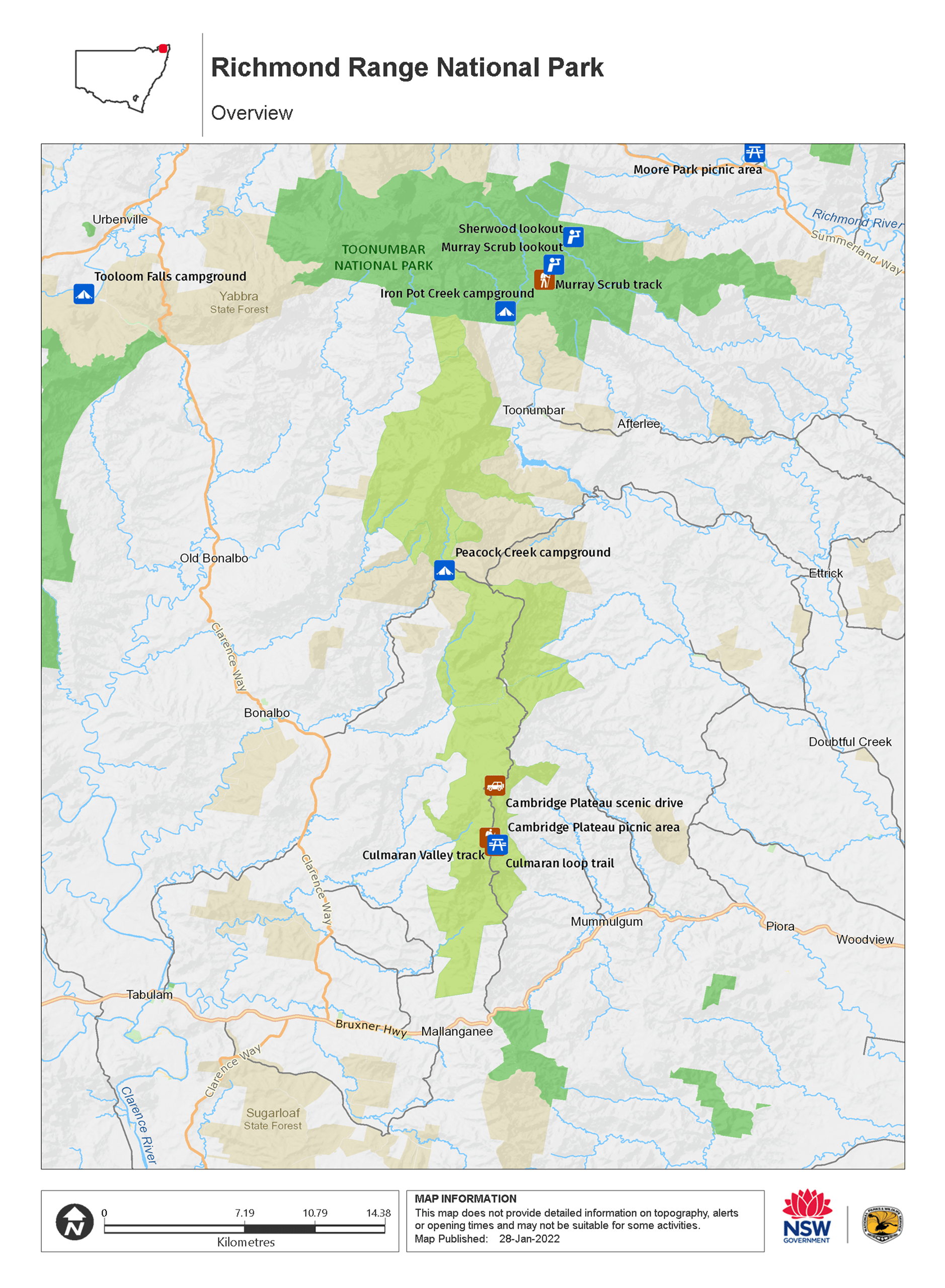
Map legend

Getting there and parking
Get driving directions
From Kyogle:
- Leave Summerland Way south of Kyogle at McDonalds Bridge Road
- Travel along Edenville Road, which becomes Sextonville Road.
- Turn right onto Cambridge Plateau scenic drive and travel north to Richmond Range National Park
From Casino:
- Drive west along the Bruxner Highway along Route 44
- Turn north at Cambridge Plateau scenic drive near Mallanganee
By bike
Check out the Bicycle information for NSW website for more information
By public transport
There is no public transport available to Richmond Range National Park.
Best times to visit
There are lots of great things waiting for you in Richmond Range National Park. Here are some of the highlights.
Autumn
Peacock Creek campground is a great place to camp in autumn. This clean, open, sunny campground is perfect for camping with wood fires, while watching an array of birdlife by your tent.
Spring
This is a lovely time to drive along Cambridge Plateau scenic drive. See new red tips on the rainforest trees, creamy clusters of flowers on wonga vines, and white flowering clematis vines in full bloom.
Summer
Enjoy the cool of the rainforests during these hot months. The Culmaran Creek walking track is a perfect place to cool off.
Winter
Watch mists rising in the valley below from Cambridge Plateau picnic. On a clear winter's day, you can see all the way east to Wollumbin and Nightcap national parks.
Weather, temperature and rainfall
Summer temperature
Average
25°C and 27°C
Highest recorded
27°C
Winter temperature
Average
15°C and 21°C
Lowest recorded
15°C
Rainfall
Wettest month
February
Driest month
August
The area’s highest recorded rainfall in one day
214.6mm
Facilities
Toilets
Picnic tables
Barbecue facilities
Maps and downloads
Prohibited
Pets
Pets and domestic animals (other than certified assistance animals) are not permitted. Find out which regional parks allow dog walking and see the pets in parks policy for more information.
Smoking
NSW national parks are no smoking areas.
Nearby towns
Kyogle (55 km)
Kyogle is an attractive timber-milling town surrounded by rainforest. It's set on the Richmond River at the base of Fairy Mountain.
Casino (82 km)
Casino is a thriving rural centre in the heart of rich agricultural country. It's set in lush pastures on the banks of the Richmond River.
Lismore (115 km)
Lismore is a major North Coast commercial, cultural and administrative centre. It's set in undulating country on the north arm of the Richmond River.
Learn more
Richmond Range National Park is a special place. Here are just some of the reasons why:
Yesterday is today
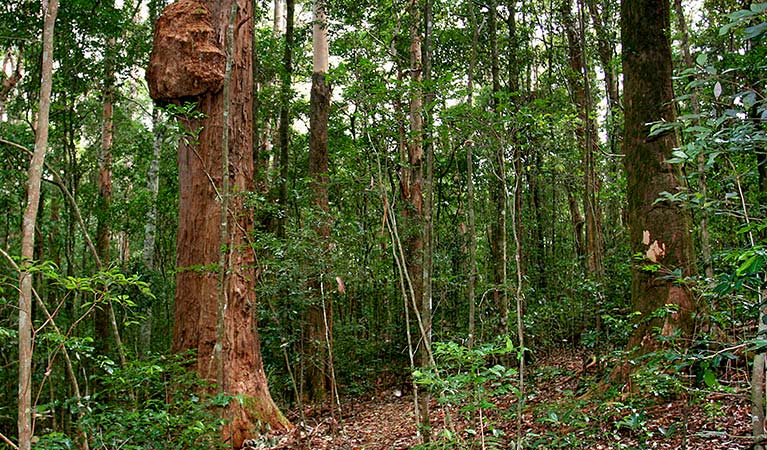
This landscape lies within traditional country of the Githabul People. Forests within the park have provided Aboriginal people with food, medicine, shelter and materials for tools and weapons for thousands of years. A landmark agreement involving co-management of the park with the local Githabul People brings ongoing benefits to the community.
World class listing
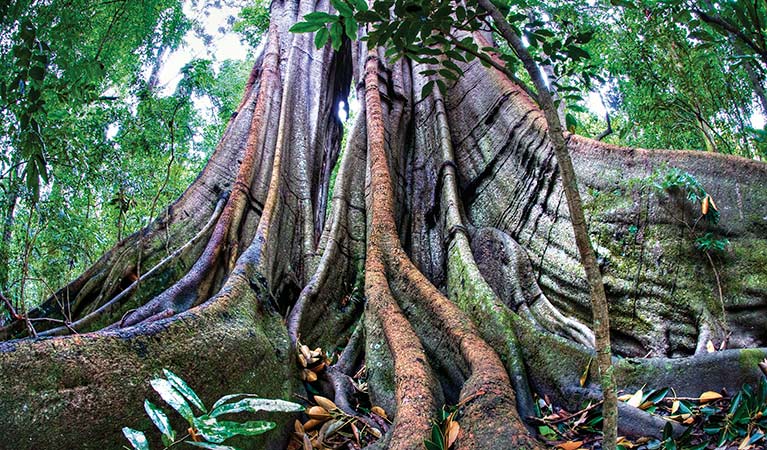
Rainforests are the earth’s oldest living ecosystems, and the Cambridge Plateau and Bungdoozle area rainforests within the park are part of Australia’s World Heritage Area. They’re a highly significant habitat for a medley of vulnerable and threatened species, which are able to live and breed freely among the protective wet rainforest vegetation.
- Cambridge Plateau scenic drive From Casino, Cambridge Plateau scenic drive is a comfortable drive along the ridge through scenic rainforest, offering fantastic views.
All creatures, great and small
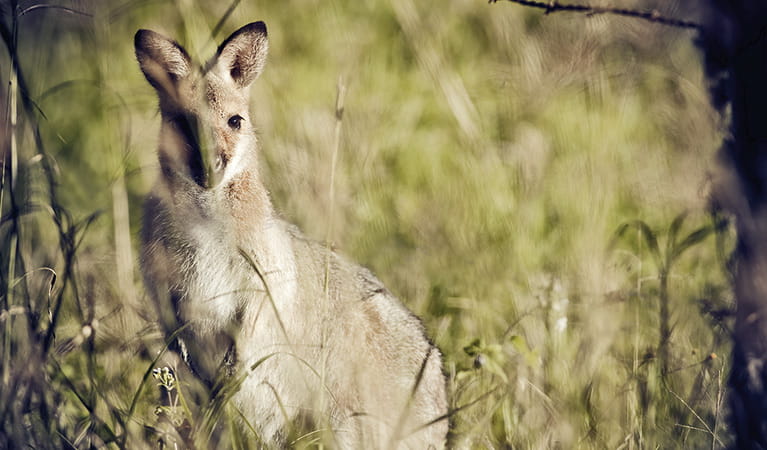
It's a great pleasure to see the golden-tipped bat, listed as a vulnerable and threatened species in NSW, thrive in this environment. Other rare mammal species include Parma wallabies, koalas, spotted-tailed quoll and long-nosed potoroos. Birds listed as vulnerable in this park include rose-crowned fruit-dove and wompoo fruit-dove. The fruit dove's deep, repeated ‘whoop whoop’ call is often heard high up in the trees of thick forest. Brush-turkeys are occasionally seen and if you’re lucky, you’ll even spot the yellow and black flash of a male regent bowerbird as it flitters overhead.
- Cambridge Plateau picnic area Cambridge Plateau picnic area, close to Casino and Kyogle, is an idyllic spot for picnicking that’s also great for birdwatching.
- Culmaran loop trail Culmaran loop trail is an easy walk on the rainforest edge, especially suited to families. Admire the exotic plants found in the drier parts of Richmond Range.
- Culmaran Valley track Culmaran Valley track, near Kyogle, takes you through diverse World Heritage-listed rainforest ecosystems and offers scenic views from its lookouts.
Plants and animals protected in this park
Animals
-
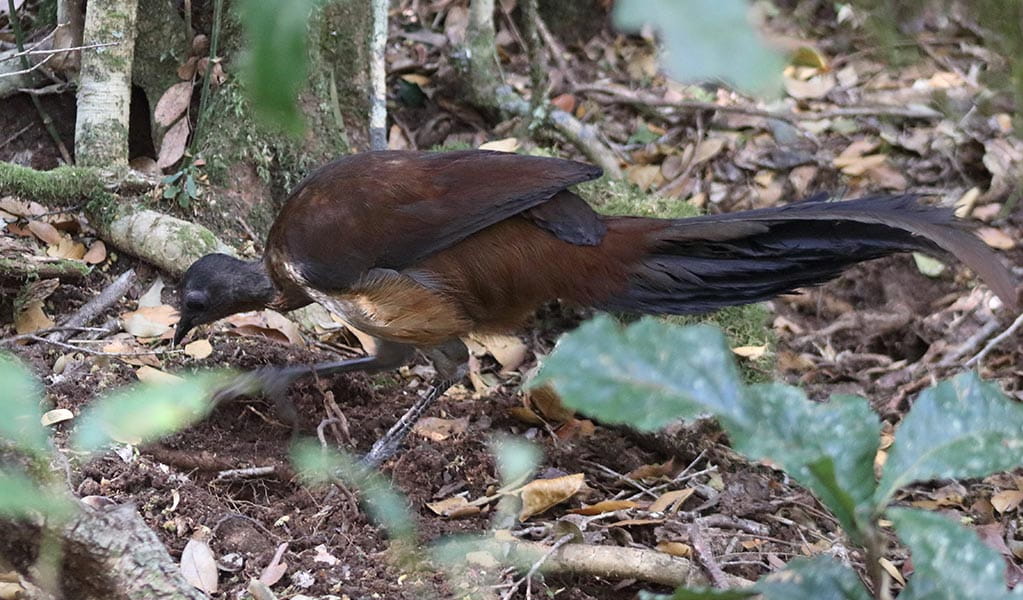
Albert's lyrebird (Menura alberti)
The Albert’s lyrebird is much rarer than the superb lyrebird. Distinguished by its richer brown plumage and less elaborate tail feathers, it’s protected as a threatened species in NSW.
-
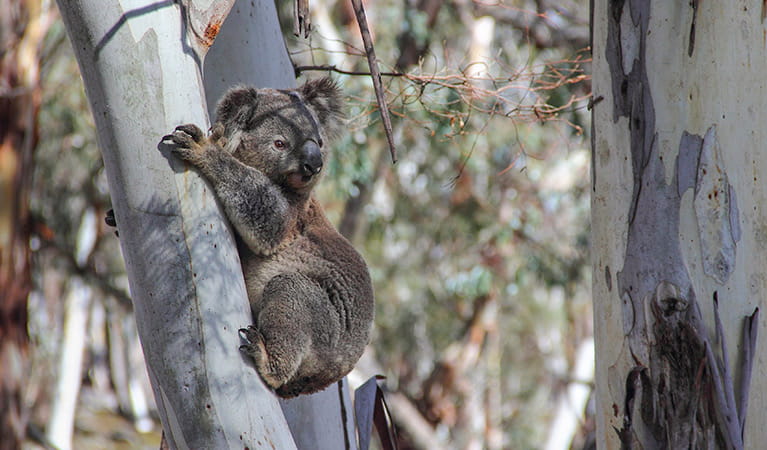
Koala (Phascolarctos cinereus)
One of the most renowned Australian animals, the tree-dwelling marsupial koala can be found in gum tree forests and woodlands across eastern NSW, Victoria and Queensland, as well as in isolated regions in South Australia. With a vice-like grip, this perhaps most iconic but endangered Australian animal lives in tall eucalypts within a home range of several hectares.
Education resources (1)
What we're doing
Richmond Range National Park has management strategies in place to protect and conserve the values of this park. Visit the OEH website for detailed park and fire management documents.

